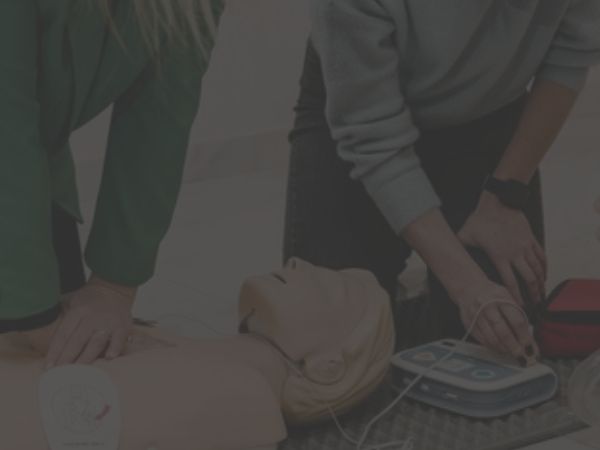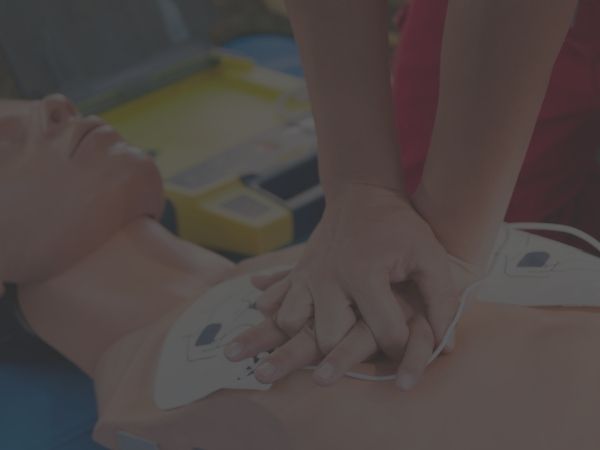Your cart is currently empty!
How Using BLS For Health Care Providers Reduce Job Burnout
Health care professionals have a mountain of responsibilities. They may fulfill positions through different care settings, care for patients of different cultures and demographics and see an increasing and work extenuating hours. Unfortunately, burnout may consume even the best-trained health care professionals. Since demand on the health care industry will never subside, the only solution is to avoid burnout. Finding and keeping the right job, as well as maintaining appropriate certifications, such as BLS for health care professionals, is the most effective way to reduce your risk of burnout.
Of course, there is much more to keeping burnout at bay than completing life-saving skills classes. Health care professionals need to understand its prevalence, causes, remedies for preventing and reducing it, and a few tips for finding the perfect job.
Burnout Ravages Health Care Providers
A recent study of physicians found 78 percent experienced burnout within the last year. Meanwhile, rates of burnout among nurses sit at 70 percent, notes Becker’s Hospital Review. Those that do suffer burnout demonstrate a marked absence from the ability to provide care, and a startling effect of burnout is its impact on mental health. According to the National Academy of Medicine, burnout leads to at least a 40-percent higher risk of suicide among male health care providers and a 130-percent increase in risk of suicide among female health care providers.
The continuance of rising burnout rates will contribute to the worsening of the problem. As more people choose to leave their careers, others will be forced to fulfill that person’s responsibilities. This is a major problem for care facilities that must find and hire new employees, as well as patients that must find new providers.
Causes of Burnout in Health Care
An effective plan to reduce burnout in health care must consider its causes. The primary causes of health care professional burnout include:
- Working too many hours. The health care industry suffers from a shortage of trained professionals, including nurses, physicians and support staff. As the shortage worsens, given the expansion of health care, more staff will be forced to work extra hours to care for those in need. Unfortunately, this leads to working more than 12 hours per day and prolonged periods without a day of rest.
- Emotional responses to poor patient outcomes. Poor patient outcomes, including death, elicit an emotional toll on health care providers, increasing the risk of burnout.
- Disagreements with coworkers or management. Disagreements are part of any work environment, and in the health care industry, disagreements may lead to resignation, hostility or even poor patient outcomes.
- High nurse-to-patient ratios. As the industry ramps up to meet increasing demand, more nurses will see high nurse-to-patient ratios. A higher ratio amounts to less time spent with each patient, increasing the risk of poor outcomes.
- Rapidly changing work requirements. As explained by Forbes.com, increased requirements to use new technology, such as an electronic health record (EHR), have a dramatic impact on burnout rates. Existing staff may feel overwhelmed following the introduction of new systems, and new staff members may not wish to train existing staff on how to use systems. This lessens the culture of collaboration in health care and increases the risk of burnout.
Remedies for Employers and Health Care Providers to Reduce Burnout
The onus of addressing health care provider burnout falls upon both facilities and health care professionals. A failure among health care professionals or employers will lead to higher turnover rates and job dissatisfaction.
Health Care Facilities Must Address Employees and the Facility Conditions
Health care facilities, such as hospitals, nursing homes, and private practices, must create a suitable work environment that actively reduces the risk of burnout. For example, employers should follow these steps to reduce burnout among their employees.
- Engage with employees.
- Implement realistic staff-to-patient ratios.
- Offer opportunities for career growth.
- Recognize health care professional accomplishments.
- Incentivize employees with more than bonuses.
- Create a robust program for managing CEUs.
More importantly, facilities that do follow these steps will become more attractive to those looking for the perfect health care job, including recent nursing graduates.
Health Care Professionals Should Follow These Tips to Reduce Their Risk of Burnout
The best facilities will be evident, but health care providers may still experience burnout at high-performing facilities. This may be due to an increase in working hours or other factors. To reduce the risk for burnout, professionals should follow these tips in managing burnout:
- Shadow before deciding on job offers.
- Inquire about employer benefits and CEU requirements.
- Know the facility’s record for patient care and treatment outcomes.
- Avoid working for more than 12 hours.
- Know your body’s work limits.
- Get enough sleep.
- Refine and expand your skill set.
- Adopt positive coping strategies, such as meditation or a hobby.
- Choose flexible training programs that do not interfere with work.
- Know when to see a counselor about your feelings.
Other Ways Completing a BLS for Health Care Providers Course Reduces Burnout
Completing a BLS for health care providers course provides key benefits that reduce the risk of burnout. These include:
- Improved knowledge base.
- Understanding of latest best practices for reducing mortality.
- Connection and socialism with peers outside of the work environment.
- Flexibility to complete coursework at your own pace.
- Better attitude toward emergency care, reports the National Library of Medicine.
- Completing a course improves your resume.
How to Find and Keep the Right Job Without Sacrificing Yourself
 All the tips for health care providers and health care entities to reduce burnout are meaningless unless health care professionals find the perfect job. The right position must work well with personal schedules, and employees need a sense of ownership and acknowledgment to succeed. Since burnout derives from unhappiness and emotional turmoil in the workplace, health care providers should follow these steps to find and keep the right job:
All the tips for health care providers and health care entities to reduce burnout are meaningless unless health care professionals find the perfect job. The right position must work well with personal schedules, and employees need a sense of ownership and acknowledgment to succeed. Since burnout derives from unhappiness and emotional turmoil in the workplace, health care providers should follow these steps to find and keep the right job:
1. Know What Type of Care Setting Piques Your Interest
Choosing to enter the health care field might seem easy, but choosing a care setting is another matter. The health care industry is filled with different patient care environments. Health care providers may help the elderly, those with broken bones, people suffering from cancer, those with childhood illness and much more, depending on the facility and floor. The list is endless.
Unfortunately, the differences in care between settings can affect the risk of burnout. As a result, health care providers should carefully consider what type of care setting they prefer. This does not mean compassion goes out the window, but it does require providers to look at health care facilities from an objective view.
For instance, are you willing to work with children, or would work in a post-surgical recovery unit be more appropriate?
2. Choose a Position That Meets Your Scheduling Needs
Another factor in finding the right job is the schedule. Health care is an around-the-clock industry. People get sick, suffer accidents, and move on from this life regardless of time of day and holidays. For health care providers, this means being on-call. However, it is important to set boundaries for when you will and will not need to go into work.
Health care professionals should also approach the job search from an informed position. In other words, what shift are you willing to work, and does that shift conflict with any other personal or familial needs?
Knowing what shift is appropriate will help you avoid the sense of loss and missed opportunity from working when other responsibilities exist. Of course, conflicts are nearly impossible to avoid, but health care providers can minimize them by looking for employers that offer a workable shift. In addition, avoid the temptation to come into work outside of your regular schedule.
3. Remember Interviews Are a Two-Way Conversation; Learn How the Facility Prevents Burnout
When going to an interview for a new position, it is easy to let the hiring manager or professional lead the conversation. However, the applicant should still ask questions about the position and facility. This is the best opportunity to learn more about what to expect regarding burnout, turnover and ways the facility works to prevent it.
For example, some facilities may offer additional benefits and services to help reduce burnout, such as concierge services, on-site child care services and group events. Do not discount these services; they are an excellent way to ensure your errands are complete when work does get stressful. Ultimately, health care professionals should look for employers that have the right services and offer benefits to reduce the burden of caring for others. In fact, some employers may offer grief counseling and therapy services to help employees suffering from the emotional toll taken.
4. Speak With Facility Leaders, Managers or Supervisors About Stressors Contributing to Burnout
Not all managers and unit leaders will recount every stressor or issue contributing to burnout during an interview. For larger facilities, this is more prevalent. Hiring managers may not be aware of unit- or floor-specific standards and issues that lead to the causes of burnout.
Those that see or experience any cause of burnout in the work environment should speak with leaders or managers regarding the issue. Supervisors may be able to rework the schedule to reduce nurse-to-patient ratios or adjust work schedules. Ultimately, managers may not be aware of a problem until it is expressed by an employee. If you never voice your opinion or thoughts, it will only lead to a greater sense of job dissatisfaction and disconnect from patients.
5. Engage With Coworkers Away From the Work Setting
Health care providers develop close relationships with coworkers. This is the result of the amount of time shared, as well as shared experiences. However, the work environment can only go so far in providing a means of socialization. Those that wish to forge stronger relationships with peers should consider recreational activities away from the work setting.
For instance, having a meal with coworkers or attending community events will help build stronger relationships. Such relationships have a protective effect against health care provider burnout.
6. Never Take Work Home With You
Another key aspect of reducing burnout and selecting the right job is leaving work at work. Avoid the temptation to ruminate on the day’s activities with coworkers, family members, and friends. Moreover, disclosing information could be a violation of HIPAA, putting your career in jeopardy.
To avoid the liability and stress with working away from the workplace, ensure all work responsibilities and paperwork are completed before clocking out. Also, leaving work at work ensures you do not feel overwhelmed and have a real opportunity to relax.
7. Keep Your Skills, Training Requirements, Licensure and Certifications Current
Maintaining professional certifications and training, including BLS for health care providers, ensures compliance with facility standards and reduces the risk for burnout. Since burnout risk increases with mortality rates of those in your care, reducing mortality through better training effectively mitigates burnout risk.
Maintaining requirements for your position also reduces the worry and stress of your professional career. For example, expiration of any required certificate or license may result in a suspension of your employment, creating a sense of dissatisfaction.
Maintaining certifications through an easy-to-access portal, such as an online education platform, reduces the amount of time spent at the workplace completing professional requirements. Depending on company policies, you may be able to work on these programs or certificates while on the clock. However, policies vary, so check with your supervisor regarding the use of company-owned equipment to complete courses or use of personal devices in the workplace.
8. Eat a Healthy Diet; Exercise Regularly
A proper diet and regular exercise serve as coping strategies and improve physical health. The sense of accomplishment and personal improvement may reduce the effects of burnout. Working out at least twice per week under the advice of your PCP and maintaining a healthy diet will alleviate some stress associated with the workplace. In addition, some health care entities may offer discounted rates for gym memberships, on-site gyms or dietary counseling. It is a win-win for both the employee and employer, mitigating burnout and encouraging employees to keep their positions.
9. Remember to Care for Yourself
Caring for yourself means much more than just getting dressed and fulfilling your obligations. It may include spending an evening in the hot tub, soaking in a bathtub, going on a picnic, purchasing new clothing—not work uniforms—spending time with family, or other recreational activities. Also, see your primary care physician (PCP) for a regular checkup; follow through with any advice or directions to improve your mental and physical health. The key is to make sure you are mentally and physically healthy, as well as refreshed for what lies ahead.
Reduce Your Risk for Burnout by Understanding It and Finding Your Perfect Job
Burnout permeates the health care industry, and health care providers are particularly susceptible to the emotional toll associated with burnout. As the disconnect between provider and patient develops due to burnout, the risk for poor patient outcomes increases. However, health care providers that understand the risks and ways to prevent it can effectively improve patient quality of care. Furthermore, find the right job and maintaining it will help reduce risk of burnout and lead to greater job satisfaction.
Have you experienced the signs of burnout; what could you have done differently to prevent it? Share your thoughts along with this article to social media now. Also, remember to enroll in your burnout-curbing skills course. It will boost your professional capability, confidence, and sense of caring as well.










Interesting stuff to read. Keep it up